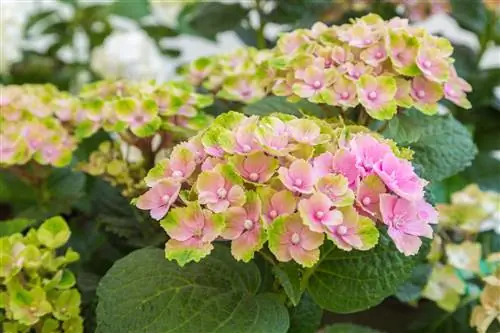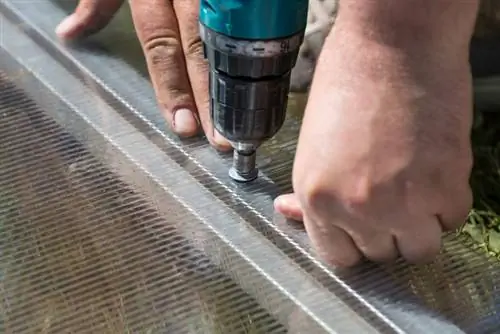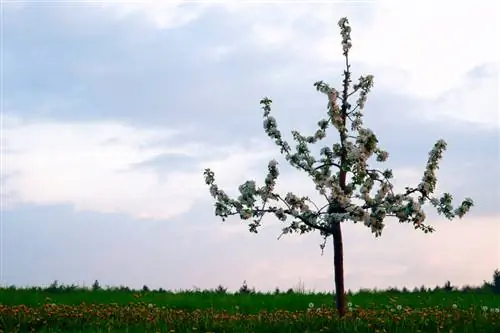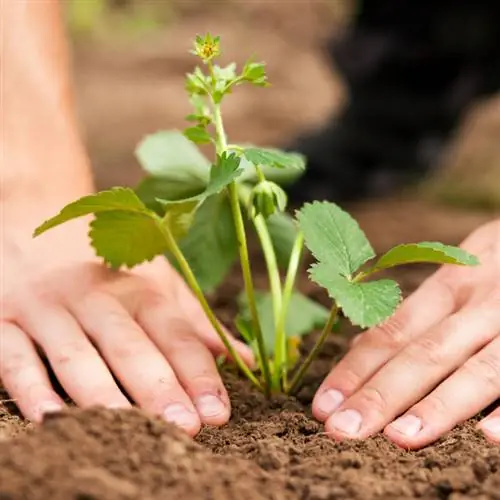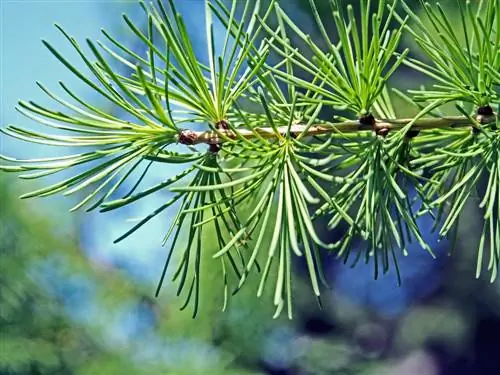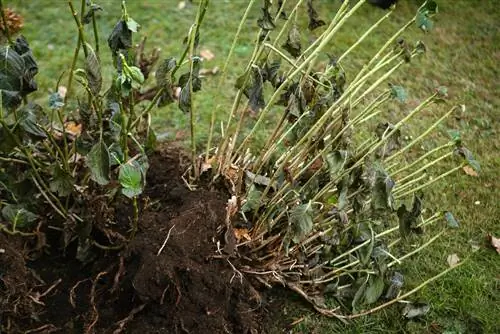- Author admin [email protected].
- Public 2024-01-05 20:48.
- Last modified 2025-01-23 11:22.
Hydrangeas are known for the fact that their flowers can change color. Many gardeners use all sorts of tricks to produce blue flowers on ornamental shrubs. Here's everything you need to know about how hydrangeas change color.
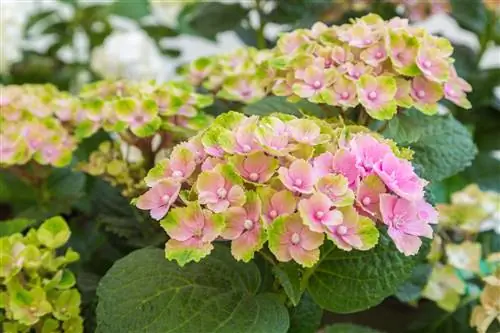
How does the color change in hydrangeas occur?
Specially bred hydrangea species can change their colors on their own over the summer months. But the common farmer's hydrangea can also be stimulated to change color by using aluminum sulfate and acidifying the soil. The dye delphinidin contained in hydrangea flowers is responsible for this.
Which hydrangeas change color on their own?
Known as“Magical Hydrangea” there are some varieties of hydrangeas available in specialist stores that can change their flower color on their own. They slowly change from a pastel tone to a darker color over a period of several months.
- The “Magical Revolution” variety starts out pink, later turns green and finally turns a strong wine red in autumn.
- The “Magical Amethyst” changes from light blue to dark green.
How can I support the hydrangeas in their color change?
Magical Hydrangea requiresno special care. It is often recommended to keep it as a houseplant. Nevertheless, you should of course take the general needs of hydrangeas into account:
- partially shaded location
- water a lot, but avoid waterlogging
- nutrient-rich, permeable substrate
- low pH
- regular fertilizer application
Can a color change in hydrangeas be influenced?
With some hydrangeas you can actuallyinfluence the flower color. The decisive factor is the treatment of the soil in which the hydrangea grows. The prerequisite for the flower to be colored is that the initial color of the hydrangea flower is pink. The decisive factors in the soil are:
- pH value
- Aluminum content
- Water hardness of the irrigation water
Start influencing the color change early. Because once the flower is fully formed, a color change is difficult to achieve.
How can I dye hydrangeas blue?
To achieve a blue coloring of the hydrangea flowers, you must acidify the substrate and enrich it withAluminum sulfate. You can achieve this by using hydrangea or rhododendron soil, compost, sulfur or vinegar water. Aluminum sulfate is also known as hydrangea blue. For blue coloring, a pH value of less than 5 should be achieved. You can test the pH value using appropriate testing devices (€11.00 on Amazon) or strips from specialist retailers. Alternatively, you can also use simple home remedies to find out whether the soil is acidic. To do this, put some baking powder or baking soda mixed with water in a container. Then add some soil. If the mixture starts to hiss or bubbles appear, the alkaline water has reacted with the acids in the soil, so you can assume a low pH value.
Tip
The chemistry of color change
The delphinidin contained in the flowers is responsible for the color change in hydrangeas. This dye, which is actually red, turns blue when combined with aluminum s alts. White hydrangeas lack delphinidin, so their color cannot be changed.

